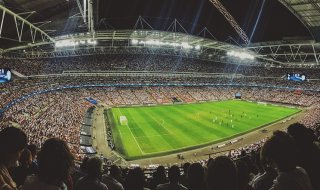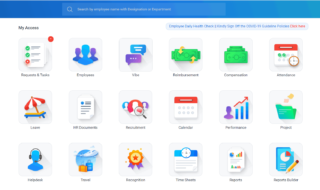Contents
Intro
The rise of immersive digital experiences has dramatically changed the way customers shop, visualize, and engage with products. Two technologies leading this transformation are 3D configurator software and AR/VR solutions. While both empower users to interact with products immersively, they serve different purposes and target specific use cases.
In this article, we’ll explore the distinctions between these innovations, evaluate their benefits, and help you decide which solution (or combination) is right for your business.
What is 3D Configurator Software?
3D configurator software is a product configurator that allows for the customization and visualization of products in 3D views. Customers can select materials, colors, dimensions, and features and then see the changes reflected in real time with high visual accuracy. This significantly enhances personalization and buying confidence, giving customers greater control over the design process and helping improve e-commerce experiences.
On the business side, sales teams can use 3D configurators to simplify complex product offerings, shorten sales cycles, and reduce errors in quoting and order processing. They can integrate with backend systems to streamline workflows across teams effectively.
What are AR and VR Solutions?
Augmented Reality (AR) is an emerging technology in the digital economy that overlays digital information/content onto the real world using a mobile device or smart glasses. For example, users can place a piece of furniture in their living room to see how it looks and fits their actual space before purchasing it, helping them make informed decisions.
Virtual Reality (VR), on the other hand, creates a fully immersive, computer-generated environment. Users typically wear a VR headset to explore virtual spaces, which are ideal for simulations, exploring virtual showrooms, or participating in training environments.
In short, both AR and VR solutions aim to deliver more engaging and memorable user experiences, especially in eCommerce and retail, albeit via various approaches to reality.
Key Differences between 3D Configurator and AR/VR Solutions
The following parts will help differentiate 3D configurator software and AR/VR solutions from 5 aspects—they’re essential for an in-depth understanding and proper applications.
#1. Interactivity
3D configurator
These configuration tools are highly interactive, allowing real-time changes to color, material, size, and features. They rely on rules and conditional logic to guide the user toward valid product builds. This is especially useful for selling made-to-order products.
AR/VR
AR/VR is more about visualizing and testing a finished product rather than building one. VR experiences are often linear, while AR supports previews in the user’s environment.
#2. Accessibility
3D configurator
3D configurator software is generally highly accessible. It typically runs directly within web browsers—requiring no special hardware, or tablet/ mobile apps for internal teams. This widespread accessibility makes it easy for a broad audience or stakeholders to engage with product design without additional downloads or specialized equipment.
AR/VR
These technologies vary in levels of accessibility. AR, especially mobile AR, is becoming increasingly accessible through smartphone apps. However, high-quality VR experiences often require dedicated headsets or devices—it’s a big challenge to enter for many users.
#3. Use Cases
3D configurator
It is best suited for complex, highly modular, customizable products such as furniture, machinery, kitchen and bath, electronics, and even modular buildings. A good 3D configurator for e-commerce enables a smooth, precise process for higher conversions.
AR/VR
AR/VR solutions are suited for applications where context and immersion are key. AR is excellent for showcasing how products fit into a user’s environment (e.g., furniture in a home) or for providing interactive instructions. VR excels in virtual tours, training simulations, product demonstrations in a virtual showroom, or game discovery journeys.
#4. Cost and Development Complexity
3D configurator
Implementing 3D configurator software involves developing 3D models, building in technologies, and integrating with existing systems. The complexity scales with the number of customizable options, product complexity, and specific demands. Once established, the ongoing expenses here are often related to maintenance and updates.
AR/VR
The use of AR/VR also varies significantly in cost and development complexity. Simple solutions might be affordable, but fully-functional ones require significant investment. And the cost of entry for advanced AR/VR is considerably higher due to the need for sophisticated content creation and often specialized hardware for the best performance.
#5. Technology and Integration
3D configurator
Real-time 3D customization and visualization, 3D modeling, pre-made logics, dynamic pricing, and data synchronization can create a high-performing 3D product configurator. Some leading configuration providers like VividWorks also add advanced functionalities, such as Visual Configure, Price, Quote, rule-based configuration, and 3D room planning. All of these are critical to leveraging customer experiences and improving design accuracy.
Most 3D configurators for e-commerce can integrate seamlessly with e-commerce platforms, such as Shopify, WooCommerce, and Magento, as well as CRMs and ERPs. This helps enable a unified operational workflow from customization to order fulfillment.
AR/VR
AR/VR solutions leverage advanced rendering engines and often require specialized SDKs (Software Development Kits) for platform-specific development (e.g., ARKit for iOS, ARCore for Android, Unity, Unreal Engine). Their integration is typically focused on embedding the immersive user experience within a specific application or website page.
3D Configurator vs. AR/VR: Which is the Best Solution?
There will not be a single “best” solution; the optimal choice depends on your specific business needs, goals, and products. Here are our suggestions that you should consider:
You should use 3D configurator software when:
- Your products are highly customizable with numerous options and variations.
- You need to streamline the sales process and reduce order errors in e-commerce.
- Providing accurate pricing based on configurations is crucial.
- You want to empower customers to design their products.
You should use AR/VR solutions when:
- You want to offer immersive product experiences with contexts.
- Providing virtual tours/ interactive product demonstrations.
- You desire to encourage simulation for a strong emotional connection.
You should combine 3D configuration software and AR/VR when:
- You sell complex, highly modular products (e.g., furniture and kitchen & bath), where detailed customization and spatial visualization in the real world are key.
- You operate in specific sectors like construction, interior, building, or retail fixtures.
- You want to offer an entire shopping journey, from design to “try-on” experience.
Conclusion
Both 3D configurator software and AR/VR solutions are powerful tools that enhance visualization and user engagement. While 3D configurators excel at enabling precise customization for improved sales, AR/VR focuses on bringing contextual experiences. Ultimately, choosing the right technology, or combining them, depends on your product complexity, customer expectations, and digital maturity. Last but not least, join TechWibe community today to learn more helpful insights about apps, software, and technologies.



